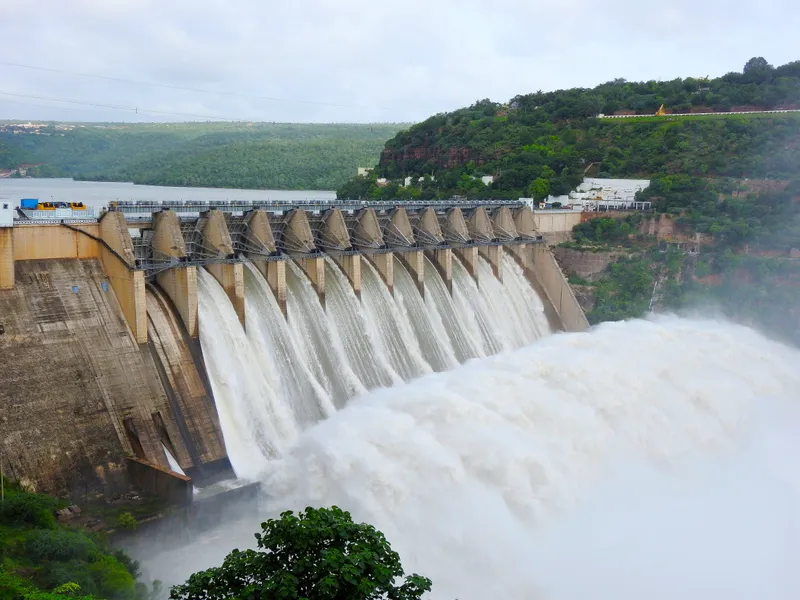India is best placed to produce cost-effective renewable, hydrogen energy: Scientist Dr JP Gupta
Scientist Dr JP Gupta, Chairman of Environment Committee, PHDCCI, throws light on the renewable energy sector of India, especially hydrogen energy, and how it can be improved.
India is the fourth most attractive renewable energy market in the world. According to a report by IBEF, as of July 2021, India had 96.96 GW of renewable energy capacity, which represents 25.2 percent of the overall installed power capacity.
As of 2019, India was ranked fifth in wind power, fifth in solar power, and fourth in renewable power installed capacity.

Recently, the PHD Chamber of Commerce and Industry (PHDCCI) organised an International Climate Summit (ICS) 2021, in partnership with NITI Aayog, Ministry of Environment, Forest and Climate Change, Department of Scientific and Industrial Research, CSIR, and the Department of Science and Technology, Government of India.
PHDCCI works for India's socio-economic growth and the promotion of Indian industry, commerce, and entrepreneurship around the world. It has a direct and indirect membership base of over 1,50,000 enterprises, with a special emphasis on the development of small and medium businesses.
This global summit discussed India's transition to clean energy, with a focus on cooperative efforts that will establish solutions for storing and transporting pressurised and liquefied hydrogen to build a hydrogen economy and supply chain in India.
SocialStory caught up with Scientist and PHDCCI’s Environment Committee Chairman Dr JP Gupta, who gave insights into the renewable energy sector of India.
Edited excerpts from the interview:
SocialStory [SS]: What is the reason behind this year’s theme, “Powering India's Hydrogen Ecosystem?”
Dr JP Gupta [JPG]: The energy sector is considered to be a major source of atmospheric contamination, and, in turn, is responsible for climate change. Thus, there is a pressing need to find energy sources, which are not only green and renewable but can also help us reach net-zero carbon emissions.
Hydrogen produces a significant amount of energy per unit of mass. A gradual transition, with sufficient policies and safety standards, can help to increase stakeholders' confidence in a hydrogen-based economy and establish a conducive environment.
The International Climate Summit (ICS) 2021 is an effort to position India as a major leader in the field of renewable energy, specifically Green hydrogen.
This timely summit will send a favourable message to the United Nations Framework Convention on Climate Change in Glasgow in November 2021.
SS: How is India best-placed to produce cost-effective renewable energy?
JPG: India is one of the best-suited countries for producing renewable energy from solar and wind, making hydrogen production cost-effective using renewable resources, which will make India the world's cheapest centre for hydrogen by 2050.
Moreover, the country has a competitive advantage because of its enormous natural resources and excellent climatic and geographic characteristics.
The formation of an International hydrogen Alliance inspired by the International Solar Alliance will foster greater synergies between research, technology, and entrepreneurship, resulting in a win-win situation. Hence, the collaboration with Norway will be a good starting point to gain momentum towards this.
SS: How is India planning to reduce global warming and carbon footprint in the future?
JPG: India is emerging as a front-runner in its attempts to prevent global warming, with the country pledging to significantly cut down on its carbon footprint in the near future.
The National hydrogen Energy Mission — presented in India's Union Budget for 2021-22 — is a huge step towards a cleaner future. It is laying out a blueprint for harnessing possible energy sources.
Hydrogen can prove to be a game-changer in the energy market. It has the potential to find its environmental benefits in sectors and applications like power generation, transportation, and indoor heating in commercial and residential sectors.
The use of locally-produced Green hydrogen can be a promising sustainable energy source in Ladakh. Local production of hydrogen will significantly reduce the transportation fuel cost and carbon emissions.
SS: How has India’s approach to climate change evolved over the past few years?
JPG: Climate change effects are already noticeable. Though not evenly dispersed, it will have an impact on all of our living conditions over time. As a result, we rely on global cooperation, such as the UN Sustainability Goals and the Paris Agreement, to build a more equitable future for ourselves and future generations.
India took the lead in the formation of the International Solar Alliance, joined by over 180 countries to harness energy from the sun. The Indian government also set a target of generating 450GW by renewable energy by 2030, of which 100GW has been achieved so far.
Moreover, the government is laying special emphasis on wind and hydro energy, Geothermal, nuclear, biofuels, and hydrogen energy.

Representational image
The Centre is also supporting biogas generation and energy conservation with concrete action plans, with a greater emphasis on the circular economy.
India’s CNG and PNG pipeline network across the country is an extremely important step towards decarbonisation. The government is also undertaking a 20 percent blending of automotive fuel with 2G ethanol on a war footing.
SS: With a lot of buzz around clean energy, how is innovation in India faring in this area?
JPG: Hydrogen production is an energy-intensive process. There is a need to exploit non-greenhouse gas producing energy sources, like wind and solar power, exponentially to generate the electricity required for hydrogen production.
By implementing smart grids and announcing significant investments in R&D, technology upgrades, and capacity creation, the government has already made significant strides in this direction.
SS: How is PHDCCI working with NITI Aayog and other government bodies to create an impact?
JPG: Hydrogen has provided a glimpse of hope against climate change as one of the cleanest fuels with zero carbon emissions.
Due to the availability of inexpensive renewable energy, India is in a unique position to generate hydrogen for its own purposes, as well as to become a global export hub. However, it has several obstacles such as technology, storage, transportation, new materials research, electrolysis development, safety standards, and regulatory framework.
Along with the stakeholders, this summit aims to tackle these issues and propel the country to be a key player in the renewable energy sector.
SS: What is the long-term goal of PHDCCI for clean energy practices?
JPG: Today, hydrogen is seen as a carbon-free alternative for a variety of uses, including long trucking, shipping, and the steel industry.
Over the next decade, refineries are projected to switch to Green hydrogen. In fact, Green ammonia will be cost-effective for fertiliser production by 2030. Steel mills in India believe hydrogen-based goods will be the key to lowering pollution.
The PHDCCI’s Environment Committee released a knowledge book titled, “Self Reliant India - Harnessing the Power of Hydrogen” during the ICS 2021.
Jointly authored by a Norwegian-Indian team of scientists, researchers, and academicians, the book’s lead author is Dr Karen Landmark, Chair of the Board, Greenstat Asia, Norway.
This knowledge book would be a repository of information. It would be a useful guide for every institution or company embarking on energy transformation and transitioning from fossil fuels to renewable energy, with valuable inputs from Greenstat Norway, GEXCON Norway, SINTEF (one of Europe's largest independent research organisations), and NEERI - India.
Edited by Suman Singh








![[YS Exclusive] EV maker Simple Energy lays roadmap for rapid store expansion, deliveries](https://images.yourstory.com/cs/2/c2cedff02d6111ef9021856619e24ca1/IMG0382-1737598981944.jpeg?mode=crop&crop=faces&ar=1%3A1&format=auto&w=1920&q=75)